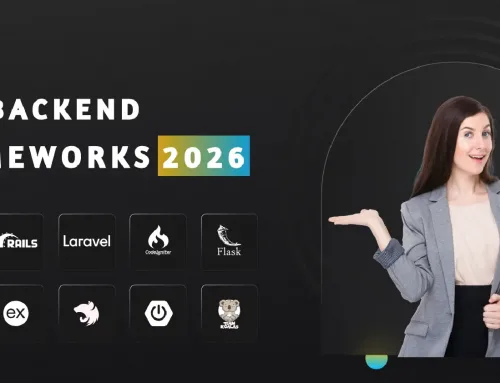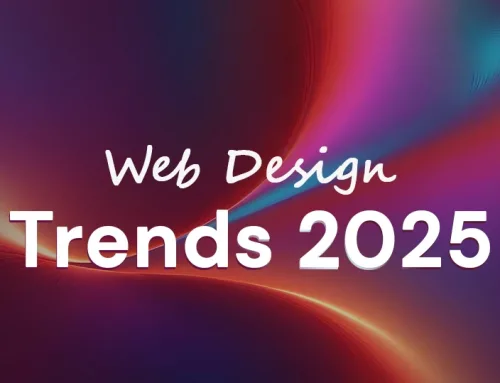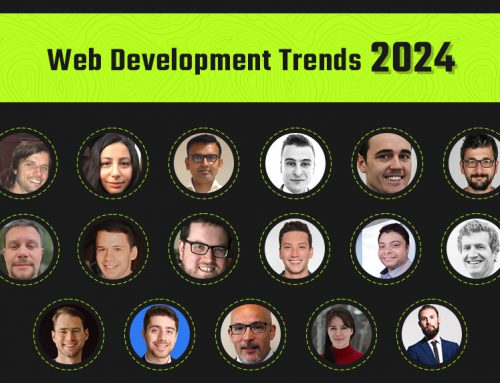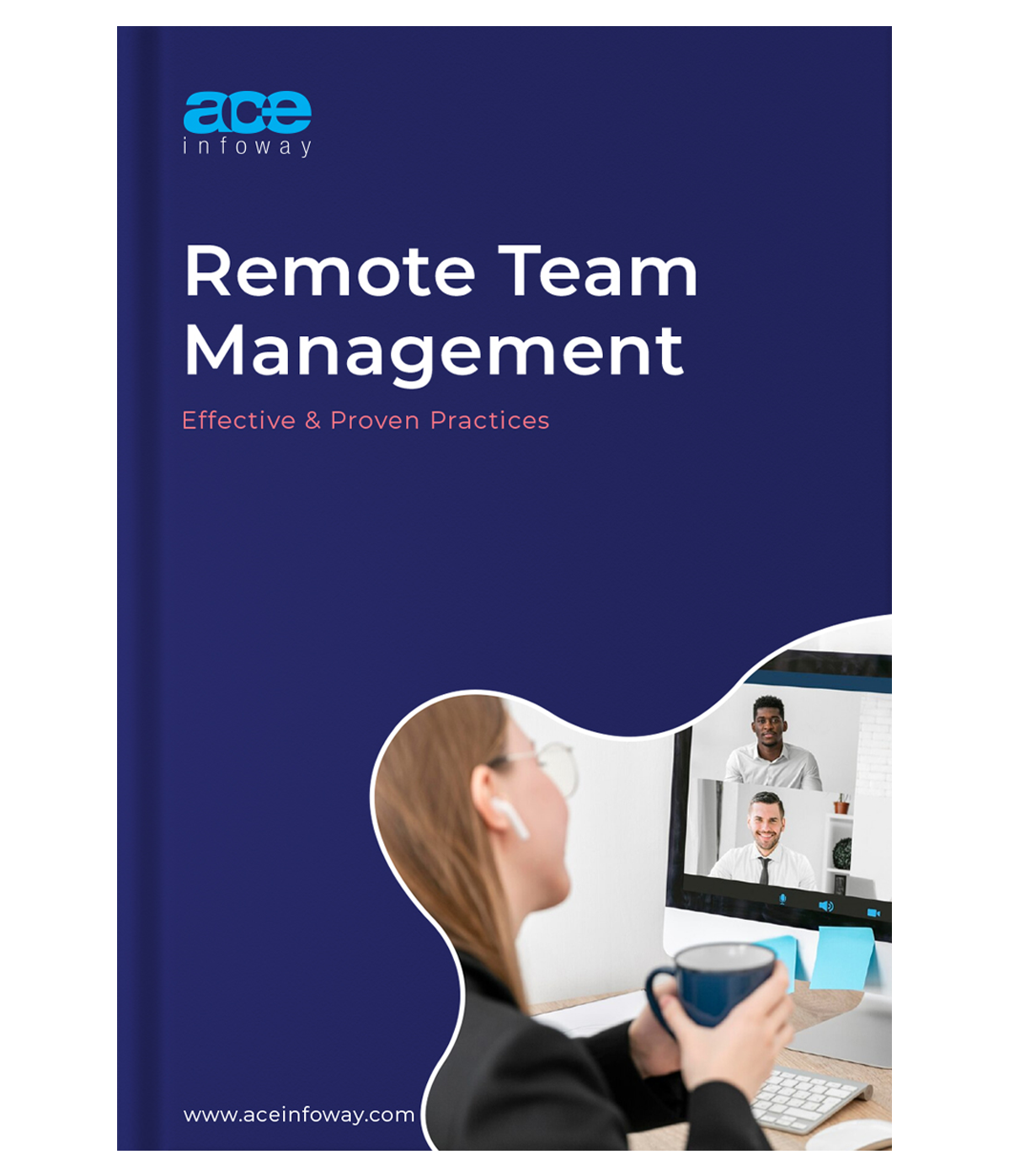Table of Contents
Modern enterprises are increasingly embracing a more agile, scalable, and future-ready way of managing content. The shift is driven by the need for greater flexibility and responsiveness in digital delivery, and at the center of this transformation is the best headless content management system (CMS) approach.
The debate of headless CMS vs traditional CMS is especially relevant for enterprise-level operations. While traditional systems bundle content and design together, making multi-platform scaling difficult, an enterprise headless CMS offers the opposite—separation that empowers innovation. Whether deploying a global intranet, digital signage, or industry-specific portals, enterprises benefit from this architecture’s adaptability and long-term maintainability.
In enterprise environments, where digital content must reach multiple channels quickly and consistently, the benefits of headless CMS become even more evident.
With APIs acting as a bridge between content and presentation, teams can deliver updates in real-time to websites, internal apps, mobile dashboards, and even emerging interfaces, without duplicating effort. This architecture not only speeds up content deployment but also reduces operational bottlenecks often found in traditional CMS setups. The advantages of headless CMS are transforming how enterprises manage digital content.
What Is Headless CMS?
A headless CMS is a system that keeps your content in one place (backend) and sends it to different platforms like websites, apps, or tools (frontend) using APIs. It doesn’t lock you into one design or setup like traditional CMS platforms do. Instead, it gives developers the freedom to build and manage user experiences using any tools they prefer.
For large businesses, this means teams can work together in one system while sharing content across different channels quickly and easily. It helps reduce repetitive work and makes managing content more efficient. These benefits of headless CMS are crucial for streamlining complex operations.
As companies grow and use more digital platforms, the advantages of headless CMS—like flexibility, speed, and central control—make it a smart choice. Understanding headless CMS vs traditional CMS helps businesses choose the best headless CMS for long-term success and digital growth. Adopting an enterprise headless CMS enables organizations to scale without rebuilding their content workflows.
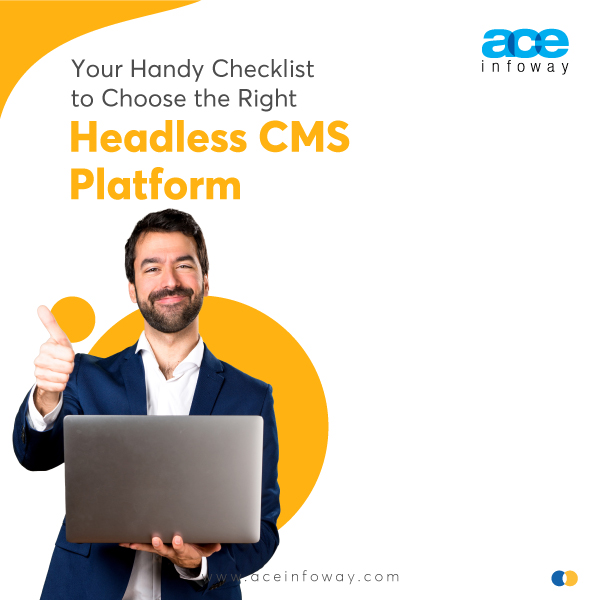
Choose the Right Headless CMS Platform
Get your free copy
Why Enterprises Prefer Headless CMS: Key Advantages Explained
Enterprises today need more than just a content management tool—they need a system that can scale with them, support omnichannel experiences, and reduce operational friction. That’s where a modern enterprise headless CMS stands out. Compared to legacy systems, the advantages of headless CMS are designed to support real-world enterprise demands like uptime, security, scalability, and flexibility, while boosting customer experience and internal productivity. The best headless CMS supports long-term growth with fewer technical roadblocks.
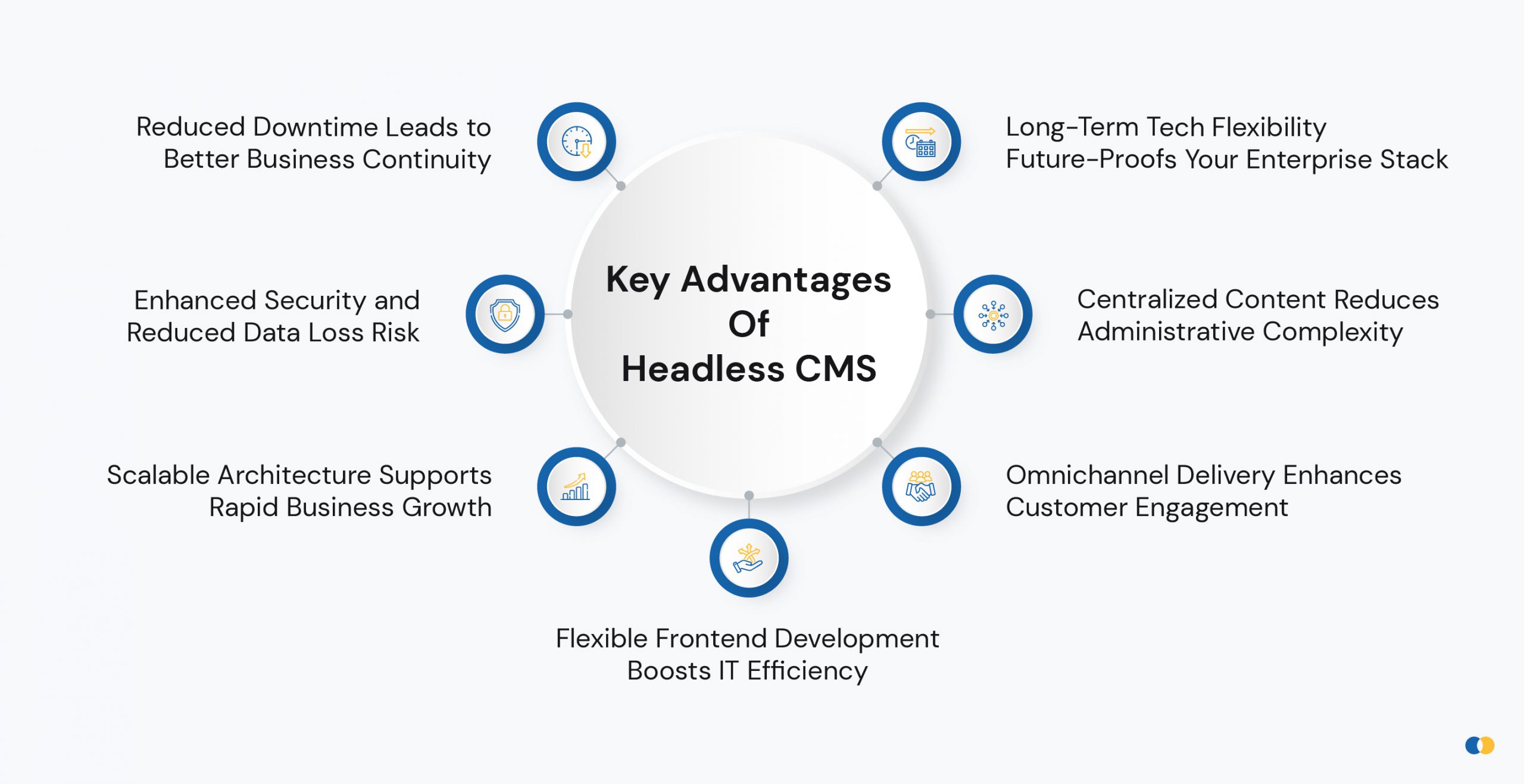
Let’s explore the top benefits of headless CMS for enterprise success:
1) Reduced Downtime Leads to Better Business Continuity
Unlike traditional CMS platforms, where the backend and frontend are tightly linked, a headless CMS keeps them separate. So, if your website frontend crashes or needs maintenance, your backend content remains unaffected and continues running across other channels like mobile apps or portals.
According to a report by Gartner, the average downtime cost in IT is 5,600 USD/minute, which extrapolates to well over 300K USD/hour. This separation greatly reduces full-system downtime, one of the biggest threats to large organizations.
Impact: Keeps critical services running even during outages, improving reliability, reducing revenue loss, and ensuring uninterrupted access for customers and teams.
2) Enhanced Security and Reduced Data Loss Risk
In traditional CMS platforms, a vulnerability in one layer often compromises the whole system. A headless CMS, on the other hand, reduces exposure by isolating the content backend and limiting direct access via APIs. This means fewer entry points for attacks.
With an enterprise headless CMS, your data stays safer, and your systems remain more compliant with modern IT and security standards. That’s one of the clear benefits of headless CMS compared to legacy systems.
Impact: Strengthens overall IT security posture, reduces downtime from cyber threats, and ensures regulatory compliance, protecting business reputation and customer trust.
3) Scalable Architecture Supports Rapid Business Growth
As enterprises grow, so do their digital demands—more platforms, more traffic, and more content. The advantages of headless CMS shine here. APIs allow you to push the same content to different systems without replicating work, and each department can build on its own schedule without backend constraints.
The best headless CMS handles large volumes of content and traffic without bottlenecks, making it ideal for high-growth environments.
Impact: Easily expand into new markets, roll out regional campaigns, and support high user demand, without reworking the entire system.
4) Flexible Frontend Development Boosts IT Efficiency
Developers working with a headless CMS aren’t locked into one framework or tool. They can use modern technologies to build fast, custom frontends for web, mobile, internal portals, or devices—all without disrupting backend workflows.
This is a major advantage when comparing headless CMS vs traditional CMS, which often forces IT teams into rigid systems.
Impact: Speeds up development timelines, reduces IT backlog and improves delivery of digital products with greater control and flexibility.
5) Omnichannel Delivery Enhances Customer Engagement
The benefits of headless CMS include seamless content delivery across channels—websites, apps, smart devices, and more. With APIs powering delivery, content stays consistent and on-brand, regardless of the platform.
This makes the enterprise headless CMS a powerful tool for engaging users wherever they are.
Impact: Offers customers a unified experience across touchpoints, improving satisfaction, retention, and digital engagement outcomes.
Traditional CMS vs Headless CMS
| Category | Traditional CMS | Headless CMS |
|---|---|---|
| Architecture | Monolithic (front-end and back-end tightly coupled) | Decoupled (back-end content delivery via APIs to any front-end) |
| Omnichannel Delivery | Web-focused, difficult to scale to multiple platforms | Omnichannel ready – same content across websites, mobile apps, kiosks, and smart devices |
| Speed & Performance | Page load can be slower due to tight integration and plugin dependencies | Faster delivery through CDN + API-first approach; better performance |
| Scalability | Becomes complex and heavy with large-scale content or global traffic | Easily scalable – ideal for high-traffic enterprise environments |
| Security | Higher risk due to exposed front-end/back-end on the same server | More secure – content layer is separated, reducing the attack surface |
| Customization & Integration | Limited integration with modern tools and workflows | Easily integrates with enterprise tools (CRM, DXP, analytics, AI engines) via APIs |
| Time to Market | Slower for multi-platform launches | Faster launches with reusable content and parallel front-end development |
| Cost Efficiency | Lower upfront cost but high long-term maintenance | May have higher initial cost, but better ROI via reuse, faster dev cycles, and lower upkeep |
6) Centralized Content Reduces Administrative Complexity
With a headless CMS, all content is managed from one central location but served to many destinations. This avoids duplication, manual updates, and versioning issues across teams and departments.
It’s a smarter way to manage content, especially for organizations with distributed teams or multiple brands.
Impact: Streamlines administrative workflows, reduces operational costs, and increases internal collaboration with less overhead.
7) Long-Term Tech Flexibility Future-Proofs Your Enterprise Stack
When comparing headless CMS vs traditional CMS, long-term adaptability is a key consideration. Traditional platforms often struggle with integrations and upgrades, while a headless CMS is built for change. It supports new tools, channels, and innovations without system-wide rework.
Choosing the best headless CMS today sets your organization up for what’s next, without the tech debt. That’s why more enterprises are turning to an enterprise headless CMS for future-ready operations.
Impact: Future-proofs your infrastructure, reduces re-platforming costs, and ensures you’re ready to adopt emerging technologies on your terms.
How a Headless CMS Works for Modern Enterprises?
A headless CMS separates the content layer (backend) from the display layer (frontend), allowing enterprises to manage content centrally and deliver it anywhere—websites, mobile apps, portals, or internal systems.
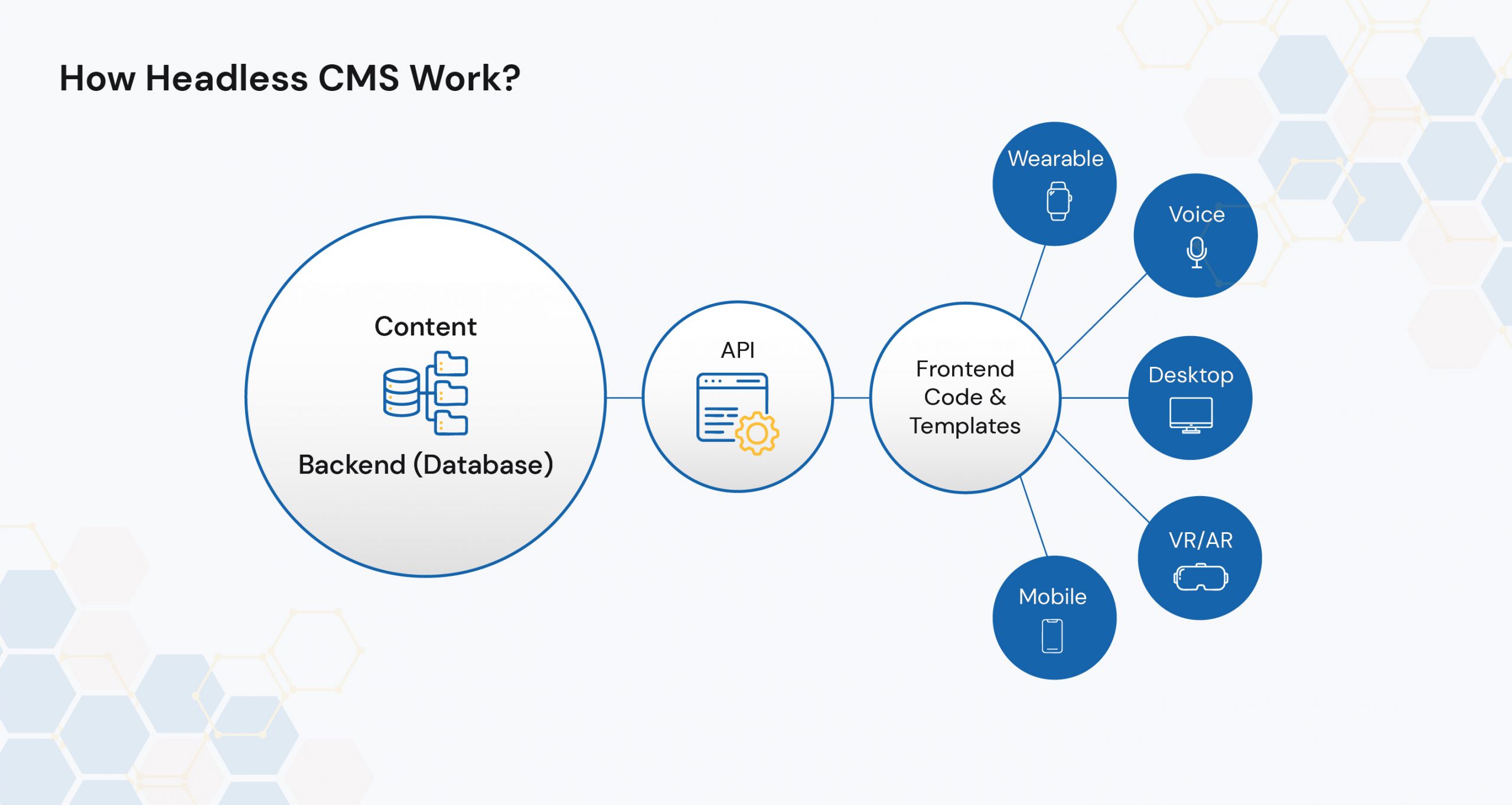
This API-driven setup gives organizations more control, flexibility, and speed compared to older, all-in-one systems.
Centralized Content, Multi-Channel Delivery
With an enterprise headless CMS, content is created once and distributed automatically across all digital touchpoints through APIs. This eliminates duplicate work, reduces human error, and ensures consistency across platforms.
The benefits of headless CMS include faster content updates, simplified workflows, and a consistent brand experience, no matter where your audience is.
Developer Freedom and Scalability
Unlike traditional systems, a headless CMS lets developers use their preferred tools and frameworks. This flexibility allows for faster rollouts and easier customization.
One major advantage in the headless CMS vs traditional CMS comparison is that IT teams can build scalable, future-ready systems without being locked into outdated templates. This freedom is what makes the best headless CMS a top choice for growing enterprises.
Cloud-Based Control for Better Operations
Most enterprise headless CMS platforms offer a cloud interface where teams can manage content from anywhere. Once updated, content is instantly pushed to connected platforms using plugins or RESTful APIs.
These advantages of headless CMS help enterprises improve operational efficiency, reduce downtime, and support remote teams effortlessly.
Enterprise-Ready Architecture of a Headless CMS
Modern organizations need flexible, future-proof content management. That’s why many are turning to the best headless CMS—a platform designed to support fast-growing, multi-channel digital environments. Unlike traditional systems, an enterprise headless CMS is built on key components that offer stability, speed, and full control over how content is created, managed, and delivered.
Core Components of an Enterprise Headless CMS
A well-designed enterprise headless CMS is built on four essential parts that support its performance and adaptability.
Centralized Content Repository
This acts as the hub where all content is created and stored, completely separate from the presentation layer. One of the major benefits of headless CMS is that it lets you manage content in one place yet distribute it everywhere through APIs.
Powerful API Integration
APIs are the backbone of a headless CMS. They make it possible to deliver content to websites, mobile apps, or even digital kiosks—quickly and flexibly. This is one of the biggest advantages of headless CMS over legacy systems.
In the debate of headless CMS vs traditional CMS, APIs offer unmatched freedom for integration and faster delivery.
Scalable Infrastructure
Enterprises grow—and your CMS should, too. The best headless CMS is built to handle large volumes of content and user activity without compromising performance. This ensures your digital ecosystem can expand as your business does.
Advanced User Management
Security and control are vital. An enterprise headless CMS gives you tools to manage permissions, access levels, and editorial workflows, keeping teams productive while protecting sensitive data.
How to Successfully Adopt a Headless CMS?
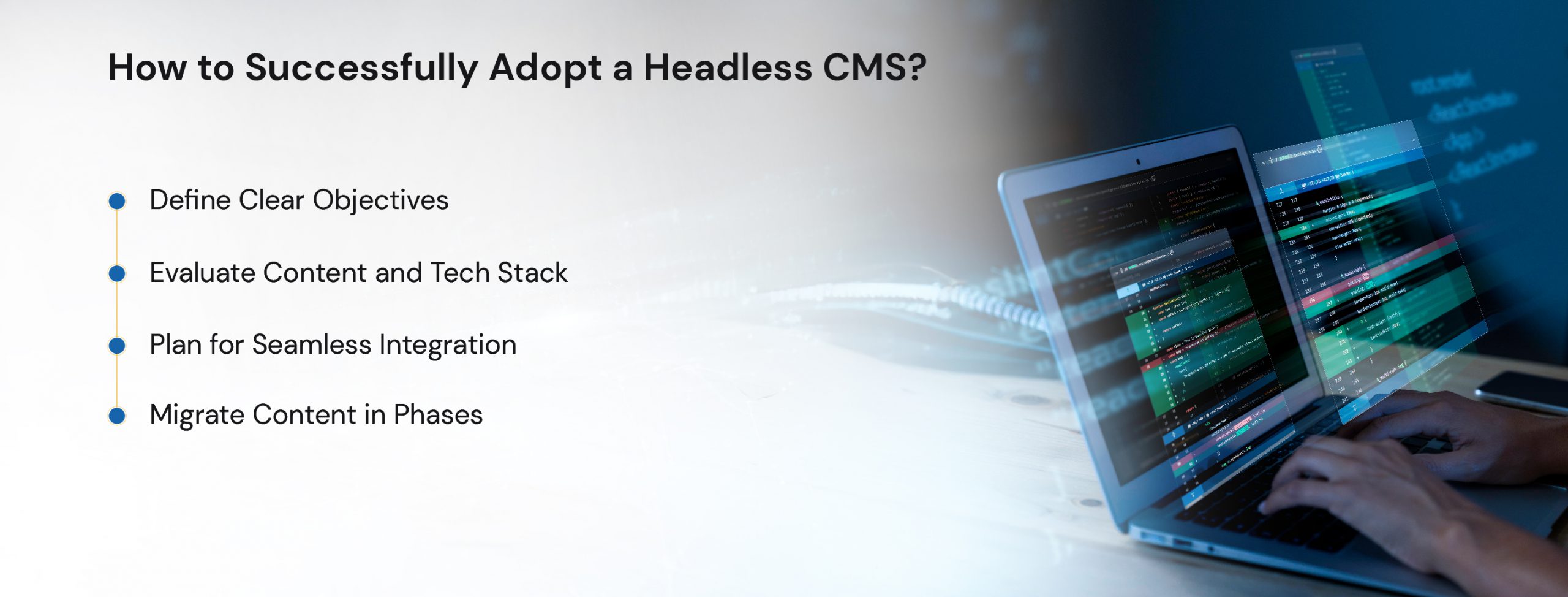
Switching to a headless CMS requires planning, collaboration, and the right tools. Here’s how enterprises can do it efficiently:
-
Define Clear Objectives
Start by identifying your goals—whether it’s multi-platform delivery, faster updates, or better scalability. This step helps align the CMS with your business strategy and ensures you choose the best headless CMS for your needs.

Choose the Right Headless CMS Platform
Get your free copy
-
Evaluate Content and Tech Stack
Audit your existing content and assess the technical environment. Consider how APIs will connect with current systems and how your frontend will be built. This step is key when comparing a headless CMS vs a traditional CMS, especially in large organizations with complex tech stacks.
-
Plan for Seamless Integration
Use APIs or middleware to connect the new CMS with tools like CRMs, ERPs, or marketing platforms. A well-integrated enterprise headless CMS brings better automation, streamlined workflows, and consistent data across systems.
-
Migrate Content in Phases
Avoid migrating everything at once. Start with simpler content types, test functionality, and scale the process. This minimizes risk and ensures a smooth transition. One of the practical benefits of headless CMS is its ability to adapt to your current operations with minimal disruption.
Conclusion
The old phrase “what you see is what sells” remains relevant and effective in traditional as well as tech-driven business approaches. The digital representation of your product or service and customer experience, as well as engagement, highly impact the conversion rate. In that case, content management must be the priority of businesses having a digital presence. Enterprise headless CMS helps organizations manage content from a single point across all the endpoints.
The digital ecosystem of businesses is becoming increasingly dynamic day by day, and relying on a single digital solution is not a smart approach for reaching the target audience and increasing sales and ROI. It is crucial for enterprises to market their products or services from multiple platforms, leveraging the best headless CMS for content management. Suppose you are planning to integrate enterprise headless CMS in your business ecosystem and don’t know where to start or are confused over whether you need it or not. Contact us to address all your queries and dilemmas; our team is here to provide you with comprehensive guidance and help you capitalize on the completed benefits of headless CMS.
If you’re considering integrating a headless CMS into your business and aren’t sure where to start—or whether it’s even the right fit—consulting with a professional web development consultant can make all the difference. Contact us today to get clear, expert guidance and unlock the full potential of headless CMS for your enterprise.
FAQs
- What is a headless CMS, and how is it different from traditional CMS platforms?
A headless CMS separates the backend (where content is stored) from the frontend (where it’s displayed), allowing content to be delivered via APIs. Unlike traditional CMS, it gives more flexibility and control over how and where content appears.
- How does a headless CMS help prevent website crashes or downtime?
By decoupling the frontend from the backend, a headless CMS ensures that issues on one end don’t impact the other. This reduces full-system downtime and keeps content available across all channels.
- Is a headless CMS better for high-traffic or enterprise-level websites?
Yes, a headless CMS is ideal for high-traffic and enterprise environments. It supports scalability, faster performance, and multi-platform delivery without compromising stability or speed.
- Can a headless CMS improve website speed and SEO performance?
Absolutely. A headless CMS lets developers optimize frontends for speed and responsiveness, which directly improves SEO rankings and user experience.
- What are the long-term benefits of migrating to a headless CMS?
Long-term benefits include faster development, reduced downtime, easier scaling, and future-proof architecture that supports growth, omnichannel strategies, and evolving technologies.













